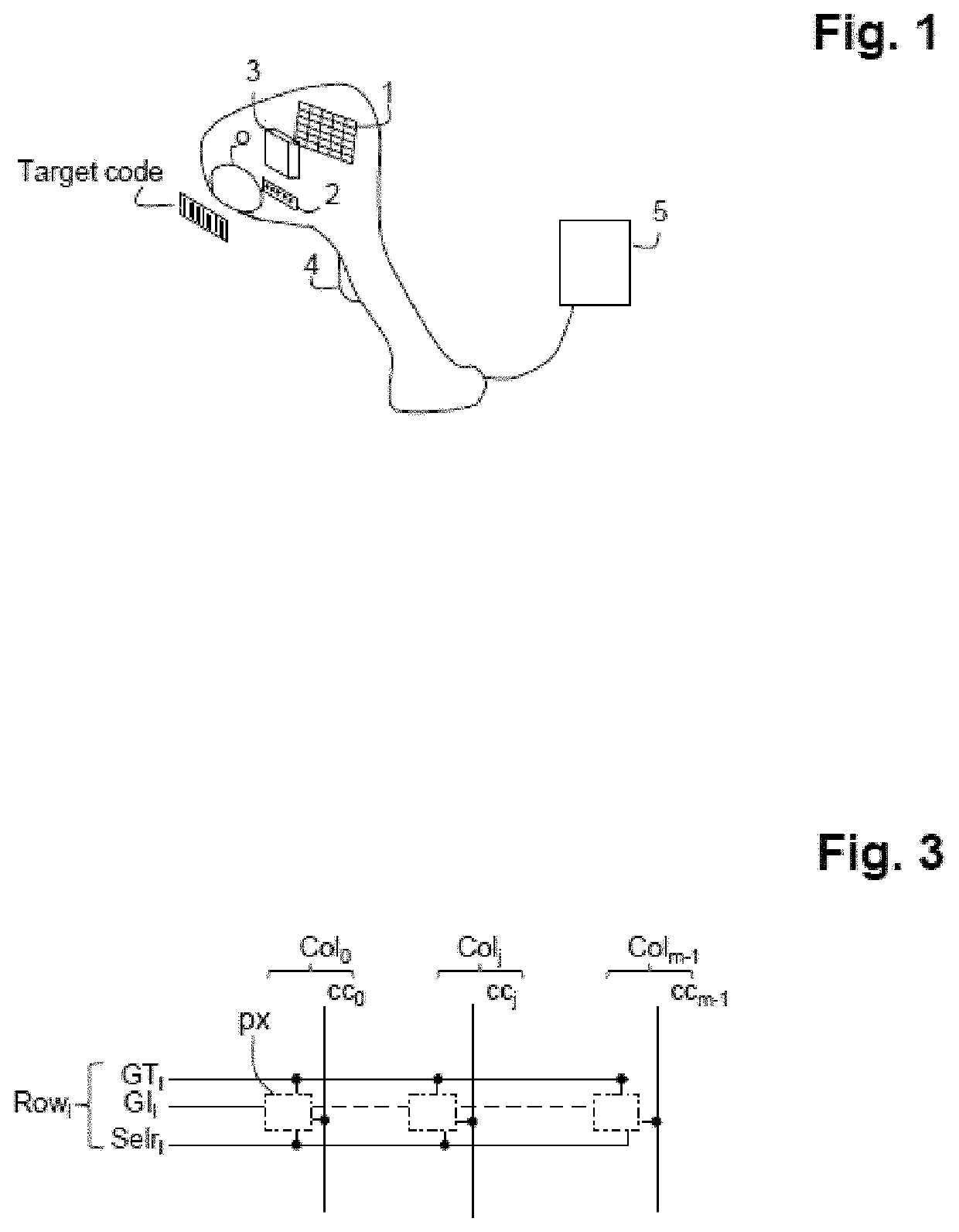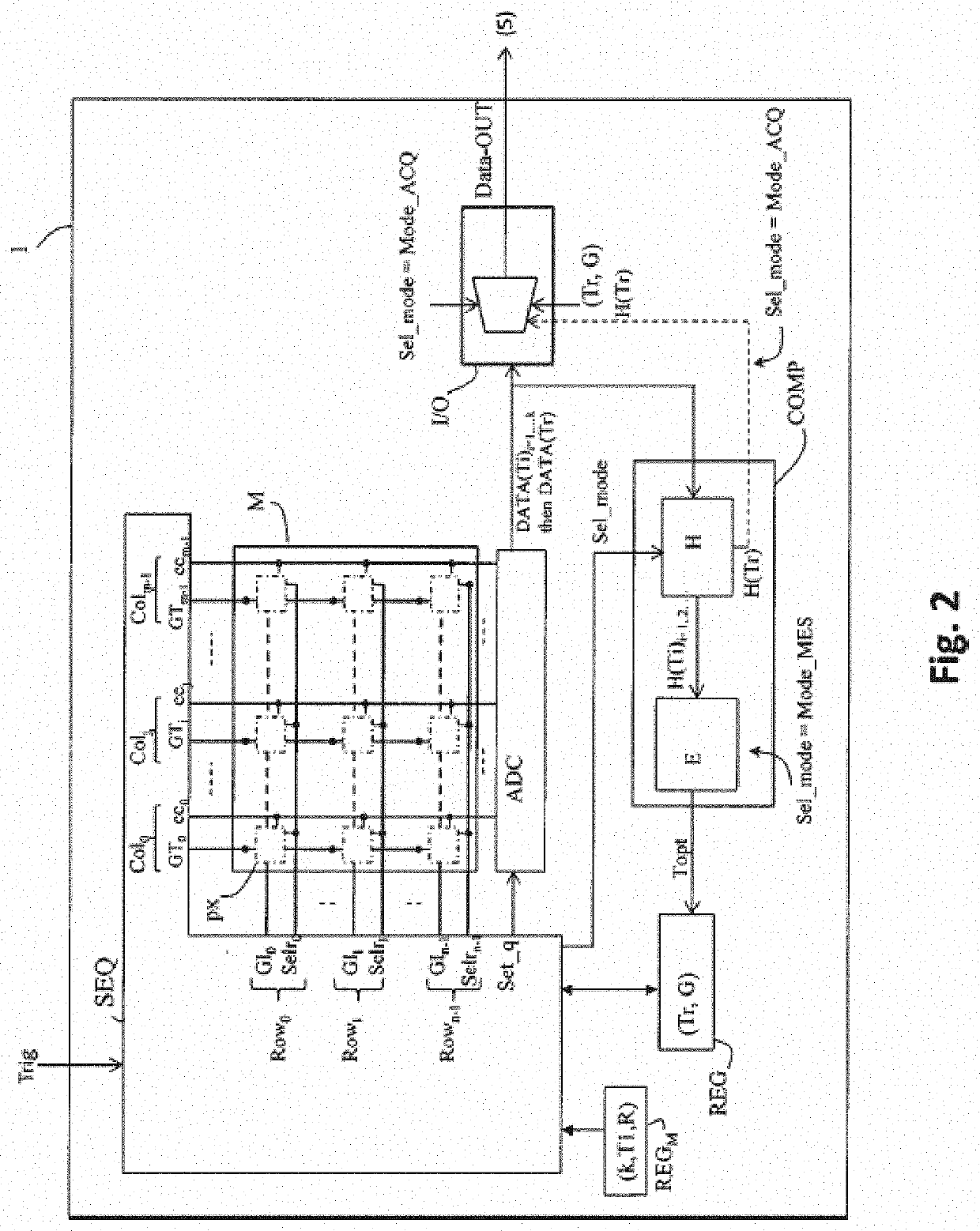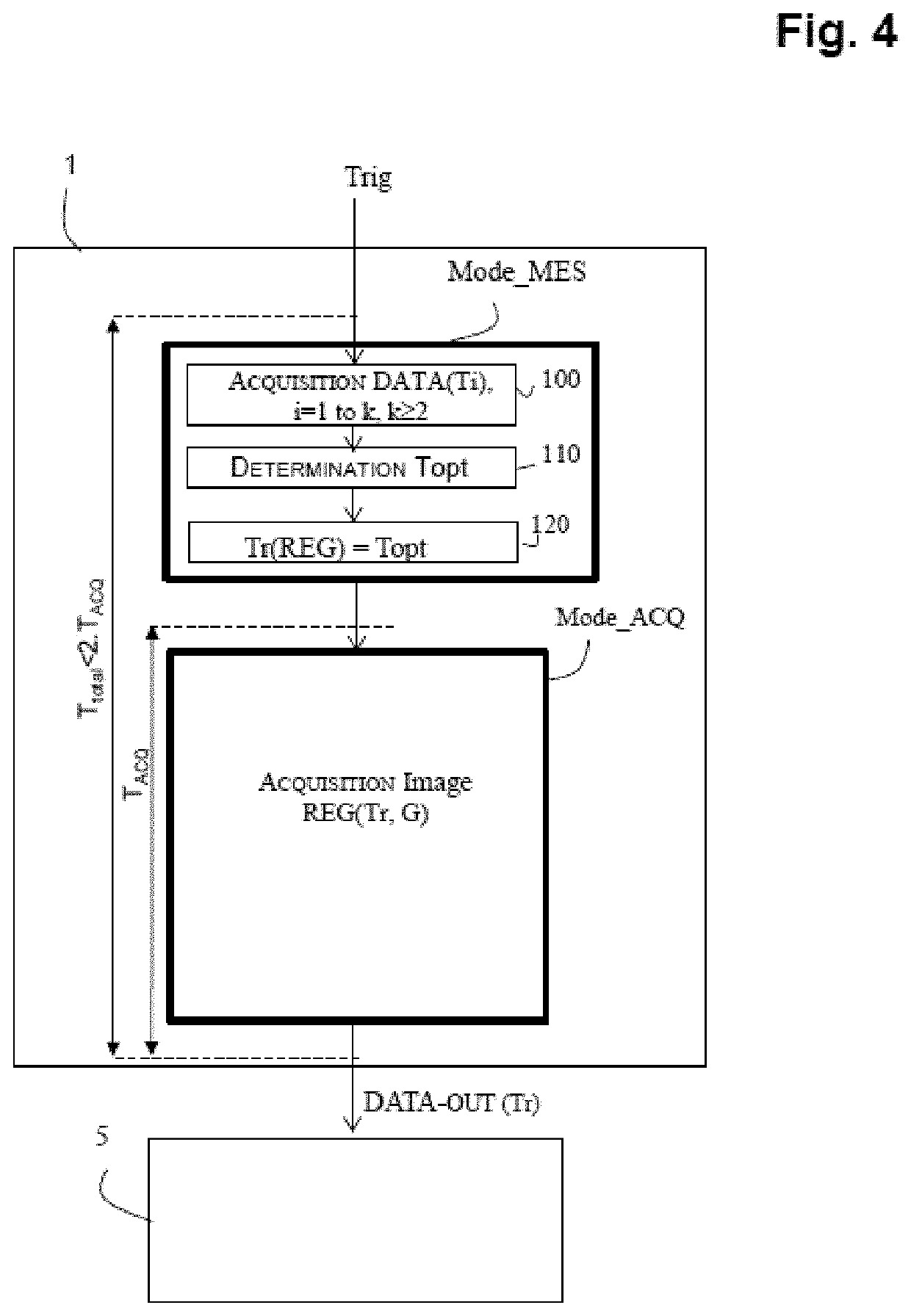Method of image acquisition by an image sensor of CMOS type for the recognition of optically readable code
an image sensor and code recognition technology, applied in the field of image acquisition by an image sensor, can solve the problems of image capture parameters that will not necessarily be suitable for the conditions, the actual image capture conditions are not completely controlled, etc., and achieve the effect of improving both the response time and the quality of the image delivered as outpu
- Summary
- Abstract
- Description
- Claims
- Application Information
AI Technical Summary
Benefits of technology
Problems solved by technology
Method used
Image
Examples
Embodiment Construction
[0033]The invention relates to code readers incorporating a CMOS sensor, irrespectively of whether they are fixed, such as those integrated into supermarket self-checkouts, or portable and actuated by an operator. A code reader, portable in this example, is illustrated in FIG. 1. It comprises a CMOS electronic sensor 1, comprising a matrix array of active pixels; a light source 2 for illuminating the target (the code placed on an object) through a window that is referenced o; and an optical system 3 that is provided to redirect the light reflected by the target onto the pixel matrix array of the sensor. In present-day systems, for the image capture, the light source generally employs a flash of light generated by LEDs to illuminate the target. Certain systems may furthermore integrate, with the aim of helping the operator to centre the target code prior to the image capture, a laser source associated with a diffractive optic to project a particular pattern (cross, corners, etc.). Th...
PUM
 Login to View More
Login to View More Abstract
Description
Claims
Application Information
 Login to View More
Login to View More - R&D
- Intellectual Property
- Life Sciences
- Materials
- Tech Scout
- Unparalleled Data Quality
- Higher Quality Content
- 60% Fewer Hallucinations
Browse by: Latest US Patents, China's latest patents, Technical Efficacy Thesaurus, Application Domain, Technology Topic, Popular Technical Reports.
© 2025 PatSnap. All rights reserved.Legal|Privacy policy|Modern Slavery Act Transparency Statement|Sitemap|About US| Contact US: help@patsnap.com



